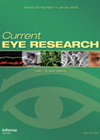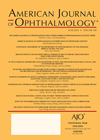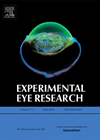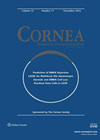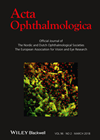
Journal Reviews archive for August 2018
Cataract in patients with pseudoexfoliation syndrome
The authors present a prospective comparative study in 43 patients with (group 1) or without (group 2) pseudoexfoliation (PXF) undergoing cataract surgery. Anterior capsule samples were obtained in all patients and analysed for signs of apoptosis by using special staining...
Cataract surgery in patients being treated for neovascular AMD
This retrospective matched case control study evaluated outcomes and predictive factors of visual acuity (VA) change after cataract surgery in patients being treated for neovascular age related macular degeneration (nAMD). They compared 124 patients that had cataract surgery with 372...
Low dose steroids for ocular dry eye disease in graft vs. host disease
This double-masked randomised clinical trial compared the response of dry eye disease (DED) to treatment with topical steroids in patients with and without graft vs. host disease (GVHD). Forty-two patients in a single centre (n=21 with and n=21 without GVHD)...
Assessment and management of dry eye disease
This paper is an update on the assessment and management of dry eye disease (DED). According to the second International Dry Eye Workshop 2017, “Dry eye is a multifactorial disease of the ocular surface characterised by a loss of homoeostasis...
Optical quality difference between monofocal and multifocal intraocular lenses
It is well known that multifocal intraocular lenses (IOLs) can generate more than one focus to restore distance and near vision, but patients may experience adverse optical phenomena such as decreased contrast sensitivity and induced glare or halos. The authors...
Long-term corneal crosslinking results in paediatric eyes
This prospective longitudinal study examined patients 18 years of age or less with progressive keratoconus, who underwent corneal crosslinking and completed 10 years of follow-up. Crosslinking protocol involved removal of epithelium, 10 minutes of riboflavin soaking, followed by 30 minutes...
Phakic iris clip lenses and endothelial cell loss
This retrospective observational study included long-term results on endothelial cell losses in highly myopic eyes, which underwent phakic iris-clip lens implantations. Included in the analysis were 113 eyes with mean preoperative spherical equivalent (SEQ) of -14.67 +/- 5.15 Diopters (D)....
MicroRNA inhibits corneal neovascularisation
MicroRNAs (miR) are small non-coding RNA that target mRNA for destruction. MiR target about 30% of the protein coding genes and fine tune their expression. MiR have been shown to be involved in several cellular processes including cell cycle, tissue...
Corneal stroma modelling under hypoxic conditions
The cornea is exposed to hypoxia under several conditions including sleep, inflammation and wound healing. Being an avascular tissue to maintain transparency, how the cornea homeostatic controls oxygen tension is important. To address this process two models were utilised; a...
Outcomes of hemi DMEK
This was a prospective, interventional case series of 10 eyes from 10 patients who underwent hemi-descemet membrane endothelial keratoplasty (hemi-DMEK) for Fuchs endothelial dystrophy. The surgical technique for hemi DMEK procedure was similar to the circular DMEK except that a...
Effect of rebubbling after DMEK
This study objectively evaluated the impact of rebubbling on postoperative corneal clarity and endothelial cell loss (ELD) after DMEK. This was a retrospective analysis of 132 consecutive DMEK cases performed for Fuchs endothelial dystrophy or pseudophakic bullous keratopathy. Patients were...
Beware the disc in myopic patients
Glaucoma is a chronic and progressive optic neuropathy characterised by damage of retinal ganglion cells. Evaluation of structural damage of the optic nerve is important in glaucoma diagnosis. The ISNT rule states that the neuroretinal rim width is generally widest...

